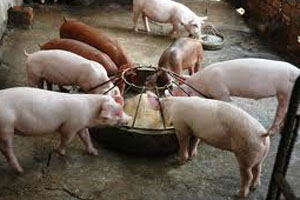EU pork production to remain stable in 2014

In 2013 pig production volumes in tonnes in the European Union were about 1.6% lower than in 2012, fuelled by high feed prices and new welfare rules for sows. 2014 is expected to be stable and prices will recover.
This was said by Jan Peter van Ferneij at the Adisseo swine conference, which was held yesterday in Paris.
Ferneij, pig economist at the French institute IFIP mentioned that the average pig price in the EU was 1.76 euro per kilogram. He expects that pig prices will remain relatively high in 2014, partly as a result of exports to China, giving a boost at the end of each year as a result of the higher demand for the Chinese New Year. Although 2013 saw a drop in pork output, the production volume is forecasted to remain stable on average in the EU, but large differences can be seen between EU countries.
“In the Northern countries (Denmark, Netherlands, Belgium, Germany) production volume was seen stable 2013 compared to 2012. This means production recovered from 2011. For this year I predict a slight increase in production for these Northern countries. However, in some countries we saw a drop in 2013 (France, minus 2.4%, Romania, minus 4.2% and Poland, minus 7.5%)”, according to van Ferneij. For Poland for example it is expected that around 100,000 sows will be removed as a result of small farms that go out of business. This doesn’t mean that Poland will produce less, as the remaining farms get bigger.
Ferneij also mentioned the impact that the current Russian ban of meat has on EU exports of pork. “Around 3.5% of all EU production go to Russia (around a quarter of all EU pork exports). If Russia continues to close the border for EU meat for longer, it has huge consequences. Huge volumes cannot be transported to Russia, which already led to a 6 cent decrease in the German pig prices”.
China remains an important export market for EU pork, although the exact growth potential is difficult to forecast. “We know that Chinese pig farmers have less favoured technical results compared to the European pig sector. Piglets produced per sow are around 14, mortality is high, feed conversion is high and the sector struggles with disease outbreaks and environmental issues. They wish to be self-sufficient. But this is still far away and until then they rely heavily on pork imports, explains van Ferneij.











